Abstract
1. An in vitro aortic arch-aortic nerve preparation was used to characterize the pressure-discharge properties of aortic 'autoactive' baroreceptors (aBRs), a functionally unique group of baroreceptors that discharge continuously below pressure threshold (Pth). These units contrast to more familiar 'quiescent' BRs (qBRs) that are silent below Pth. This study also examined whether aBRs rapidly reset to sustained changes in mean arterial pressure (MAP), and whether they respond to local vasoconstriction, as found in qBRs. 2. Pressure-discharge curves were constructed using slow pressure ramps (2 mmHg s-1) in a total of fifty-four aBRs and sixty-four qBRs from fifty-three Wistar-Kyoto rats. Rapid resetting was tested by comparing the curves before and 15 min after adjusting MAP to selected levels between 40 and 180 mmHg. Response curves were also compared before and after constricting the arch with 10(-8) M angiotensin II. 3. Compared to qBRs, aBRs had significantly lower Pth values (83 +/- 2 versus 91 +/- 2 mmHg, mean +/- S.E.M., P < 0.05) but similar threshold frequencies (13 +/- 1 versus 16 +/- 2 Hz), higher saturation pressures (138 +/- 4 versus 123 +/- 2 mmHg) but similar saturation frequencies (55 +/- 3 versus 55 +/- 3 Hz), and lower suprathreshold sensitivities (slope of linear region: 1.1 +/- 0.1 versus 1.4 +/- 0.1 Hz mmHg-1) but wider operating ranges (57 +/- 4 versus 35 +/- 3 mmHg). 4. The aBRs rapidly reset to changes in MAP (n = 16), and the extent of resetting (delta Pth/delta MAP = 0.26) was similar to that in qBRs (0.23). 5. Vasoconstriction had no effect on aBR subthreshold discharge (n = 5), but inhibited suprathreshold responses to pressure much like that in qBRs. 6. These results suggest that aortic aBRs may extend the range of the baroreflex, but probably do not improve its sensitivity to transient fluctuations in pressure or its ability to correct changes in mean pressure over extended periods. 7. Subthreshold discharge in aBRs appears to be an intrinsic property of these units, which was not affected by resetting or changes in vascular tone. At suprathreshold pressures, contraction of local smooth muscle modulates the aBRs and qBRs in a similar fashion by mechanically unloading the sensory endings.
Full text
PDF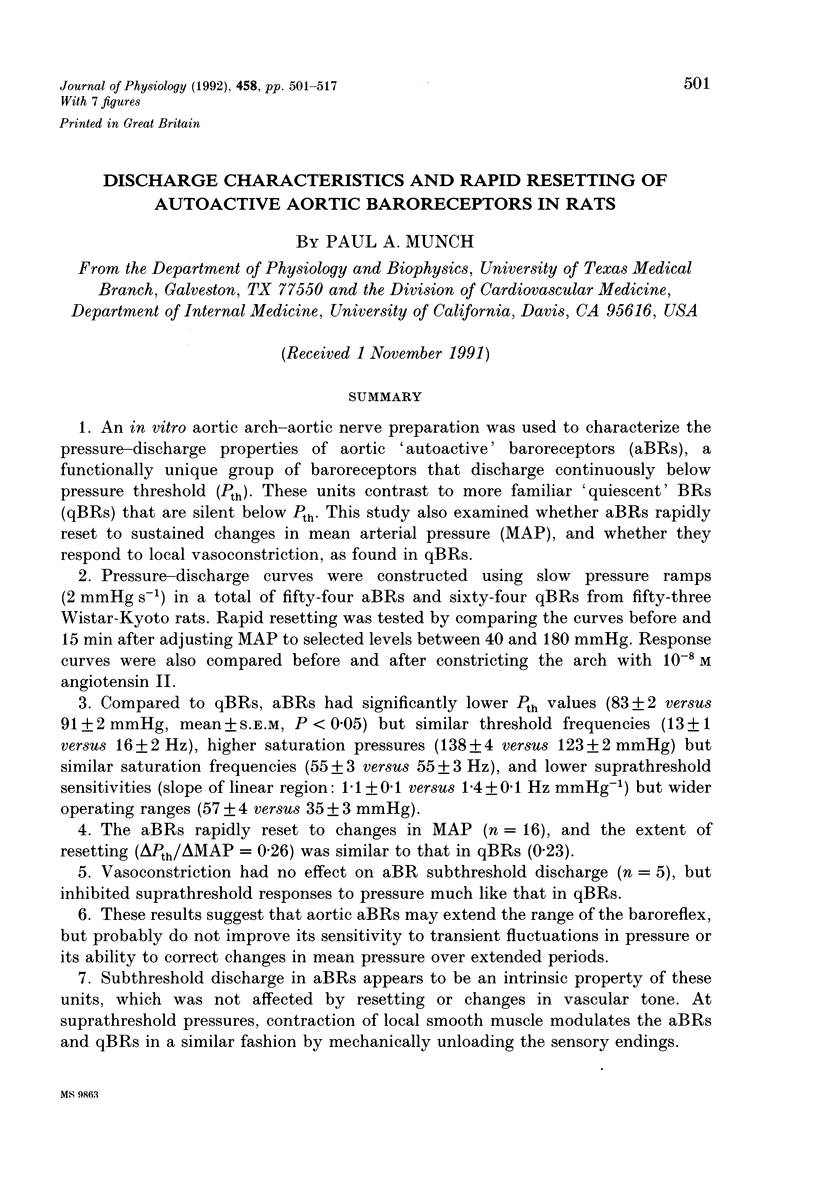
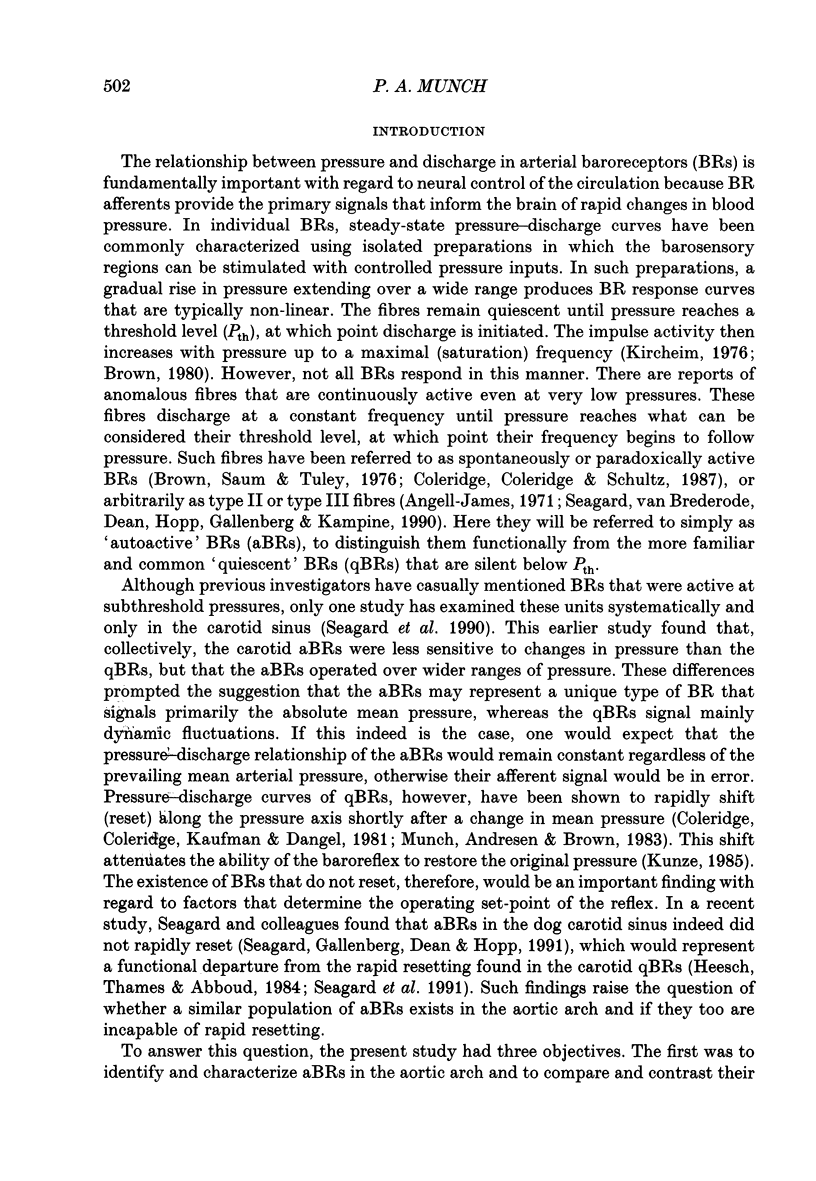
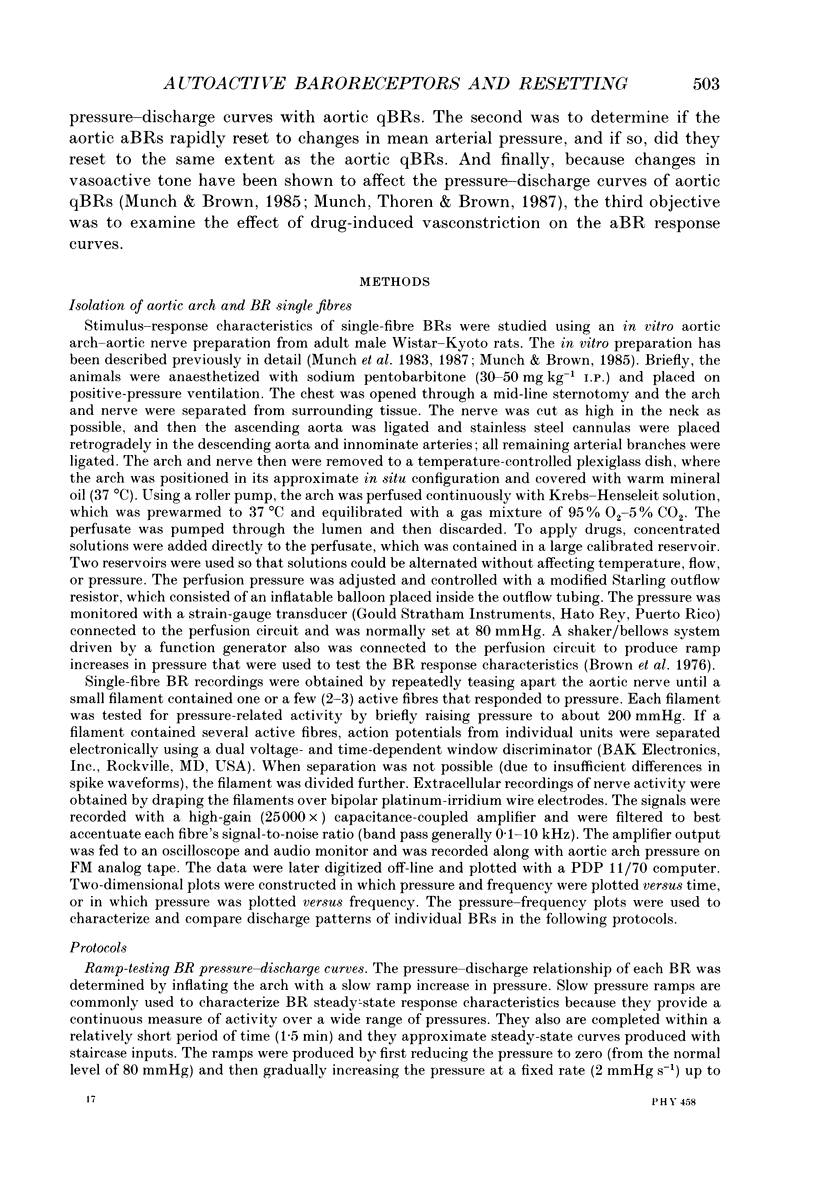
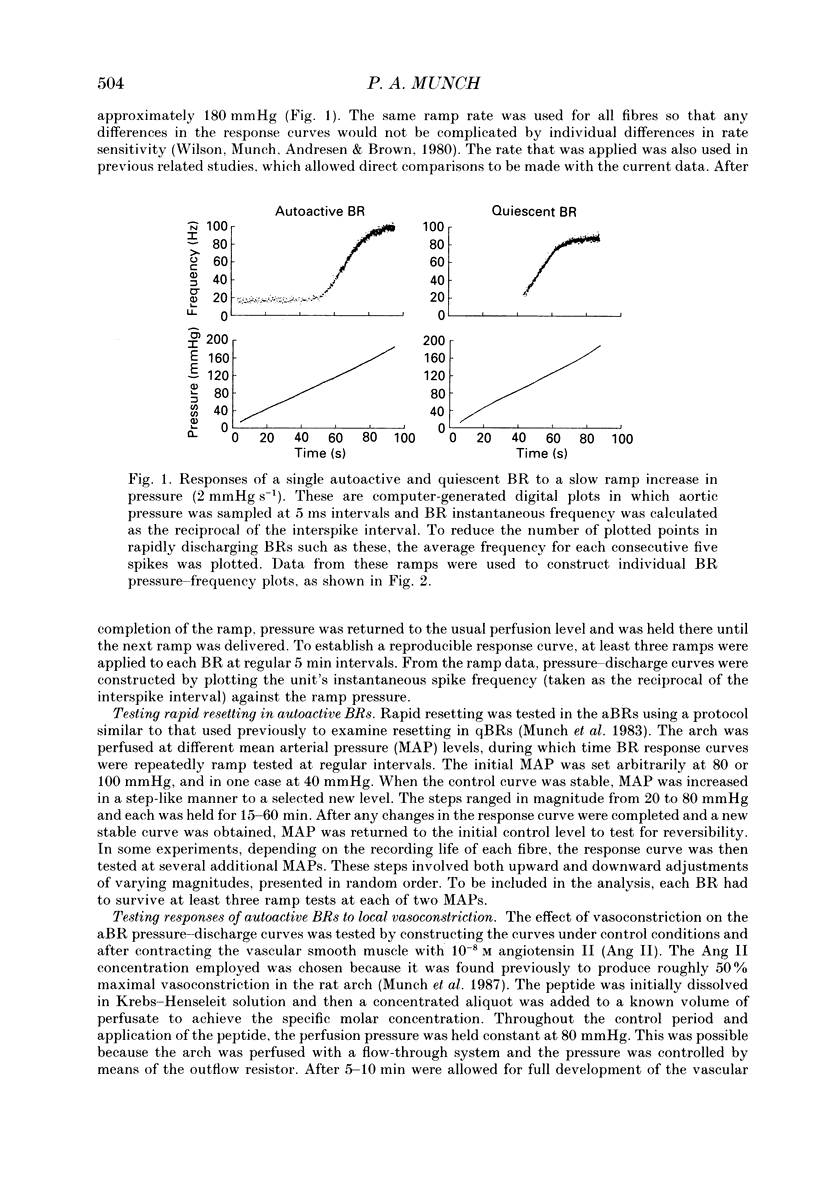
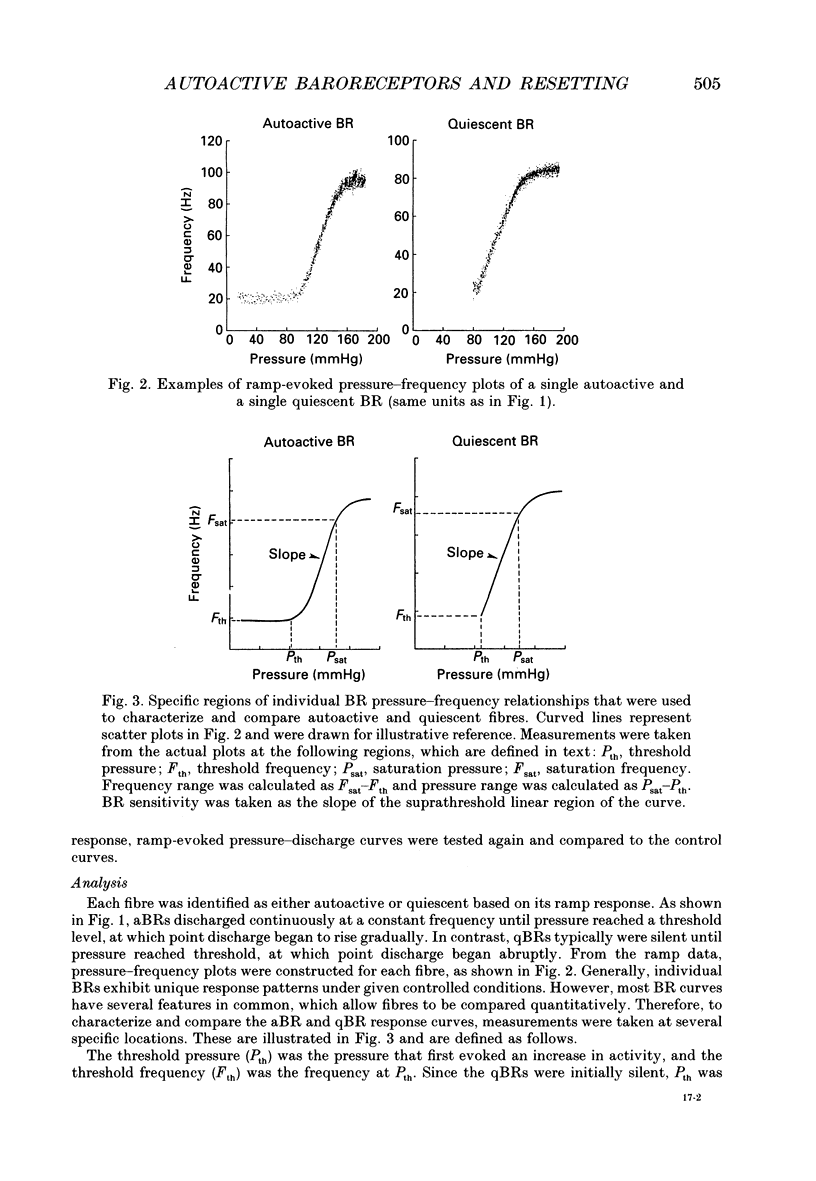
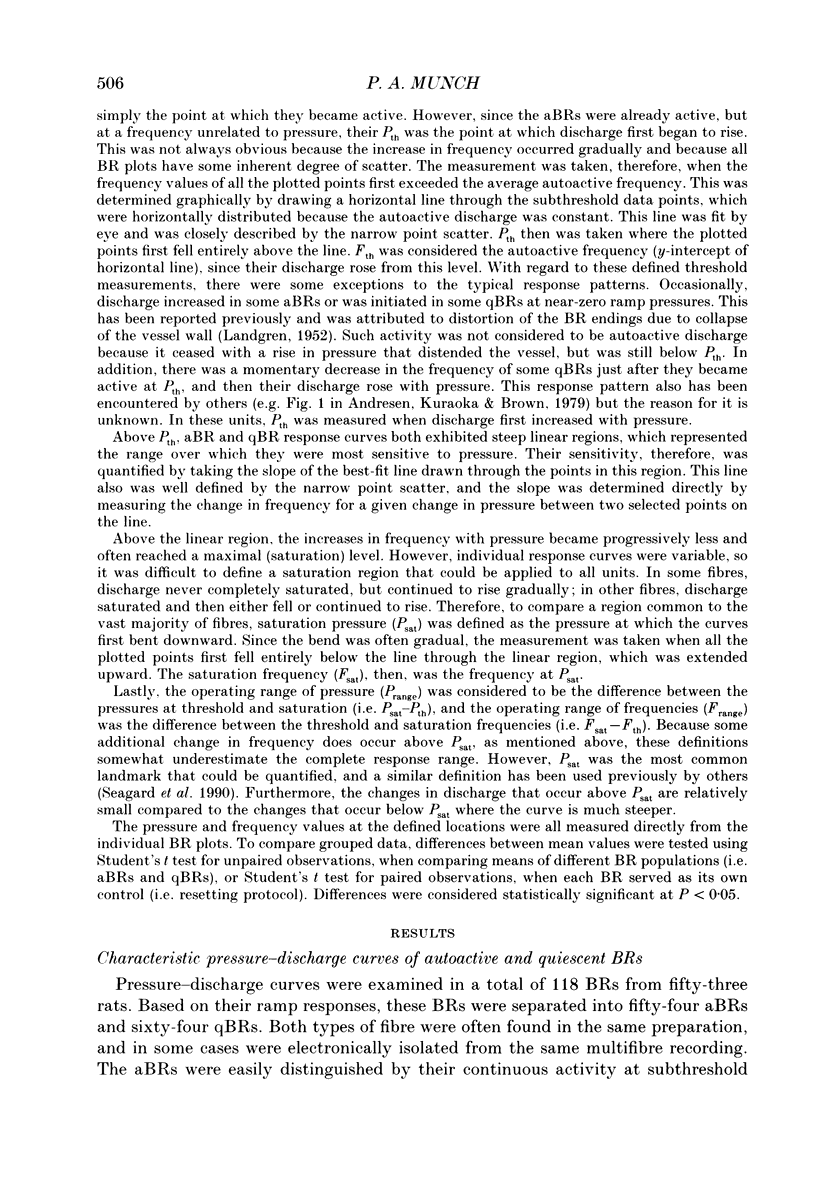
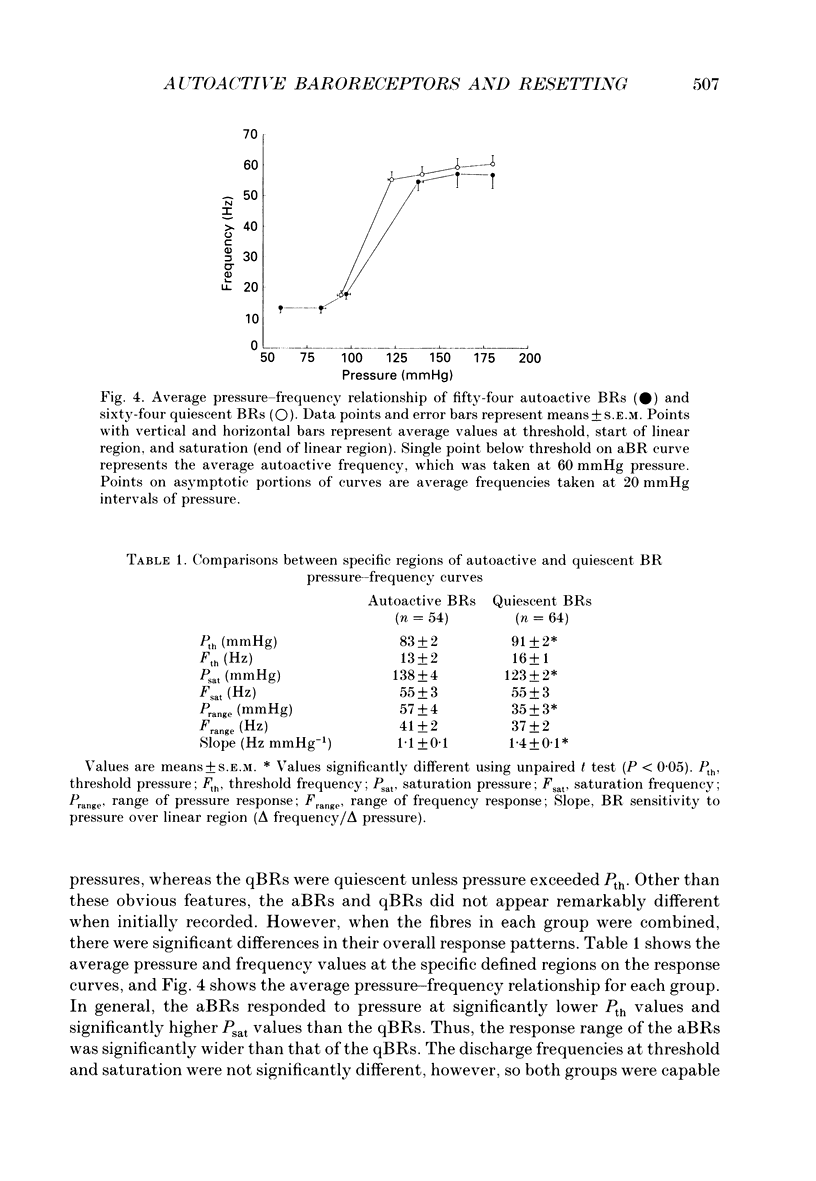
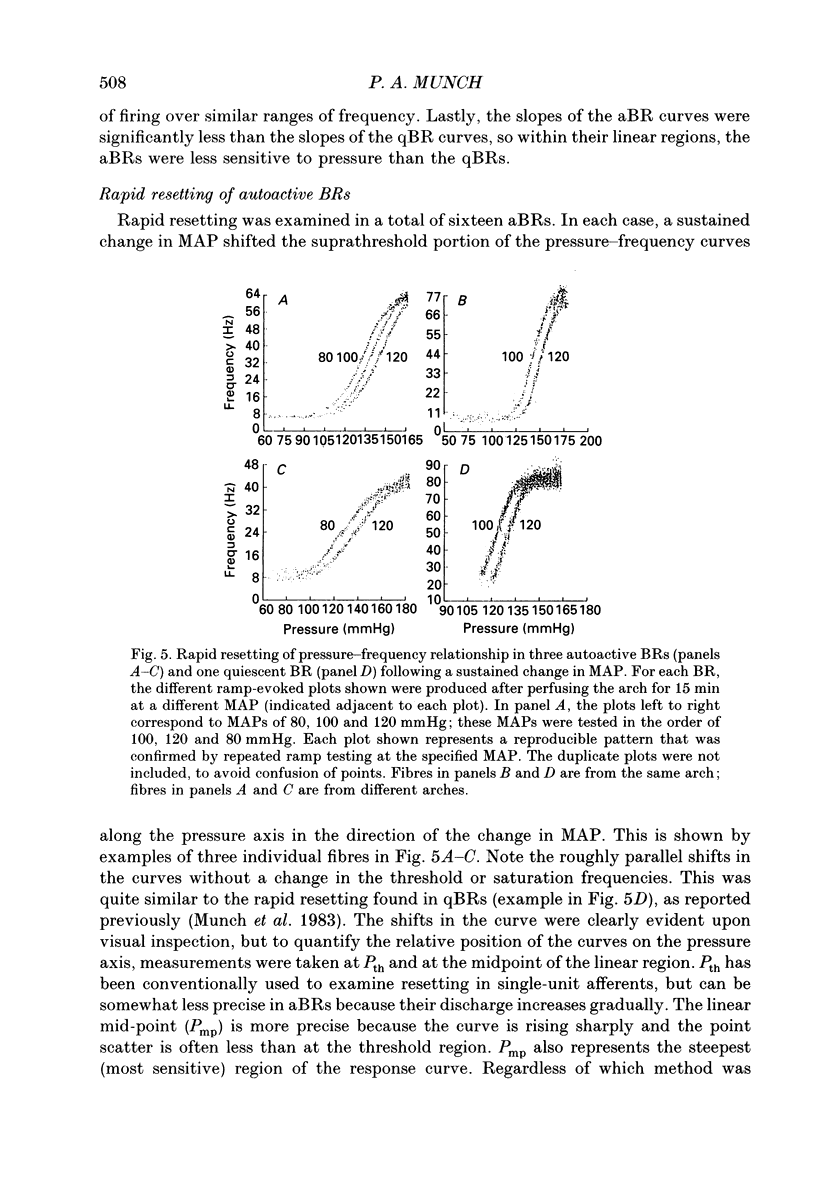
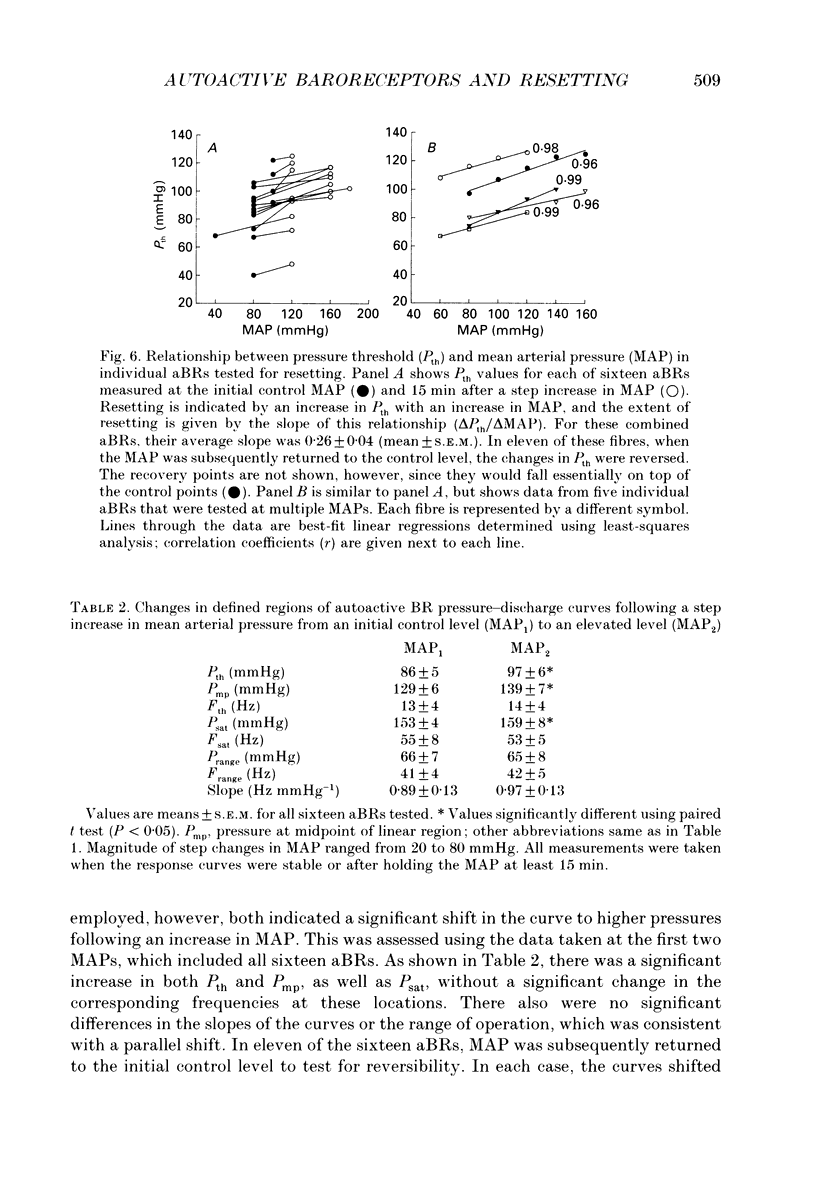
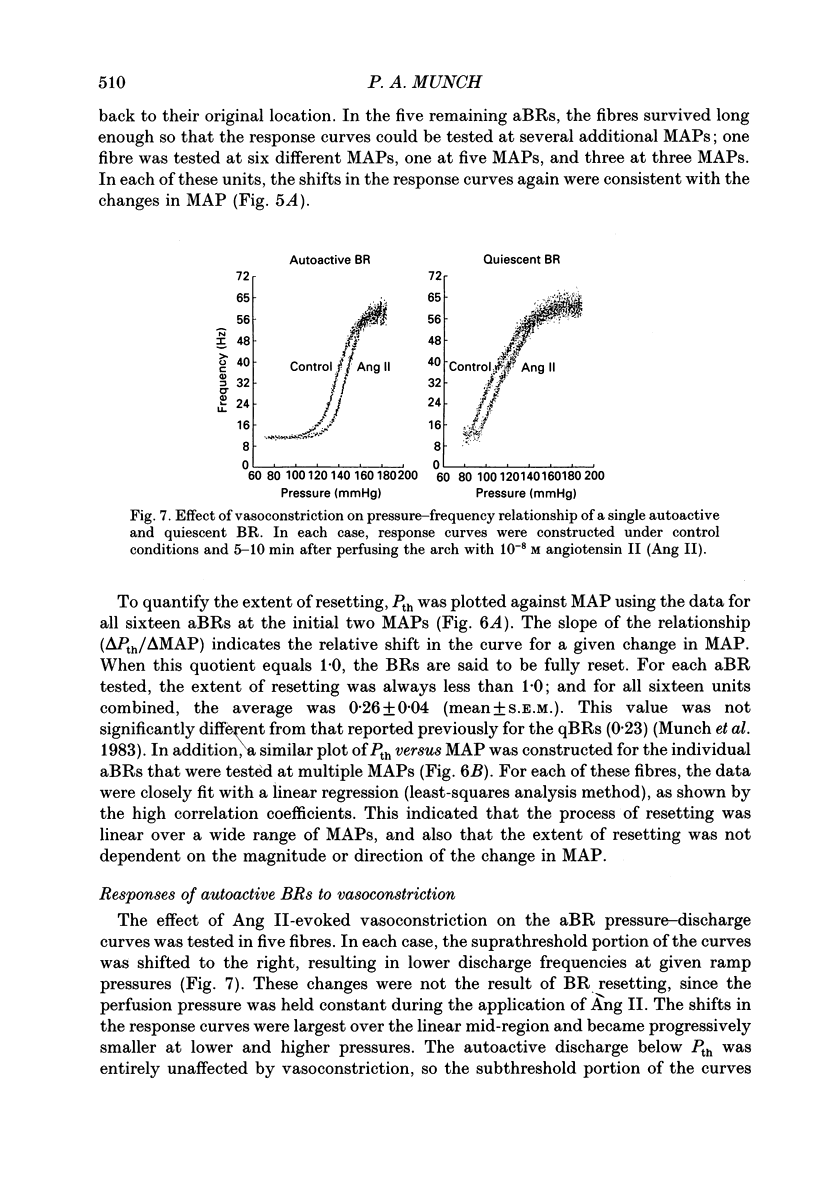
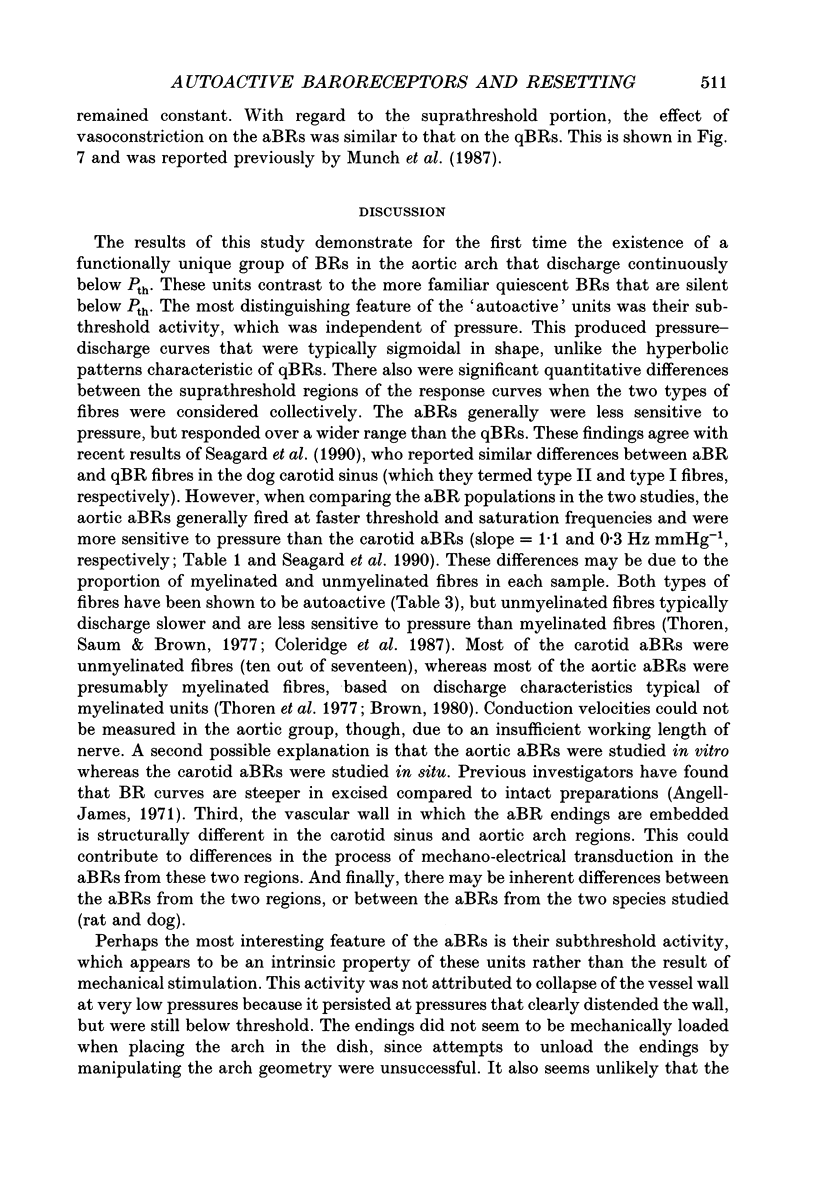
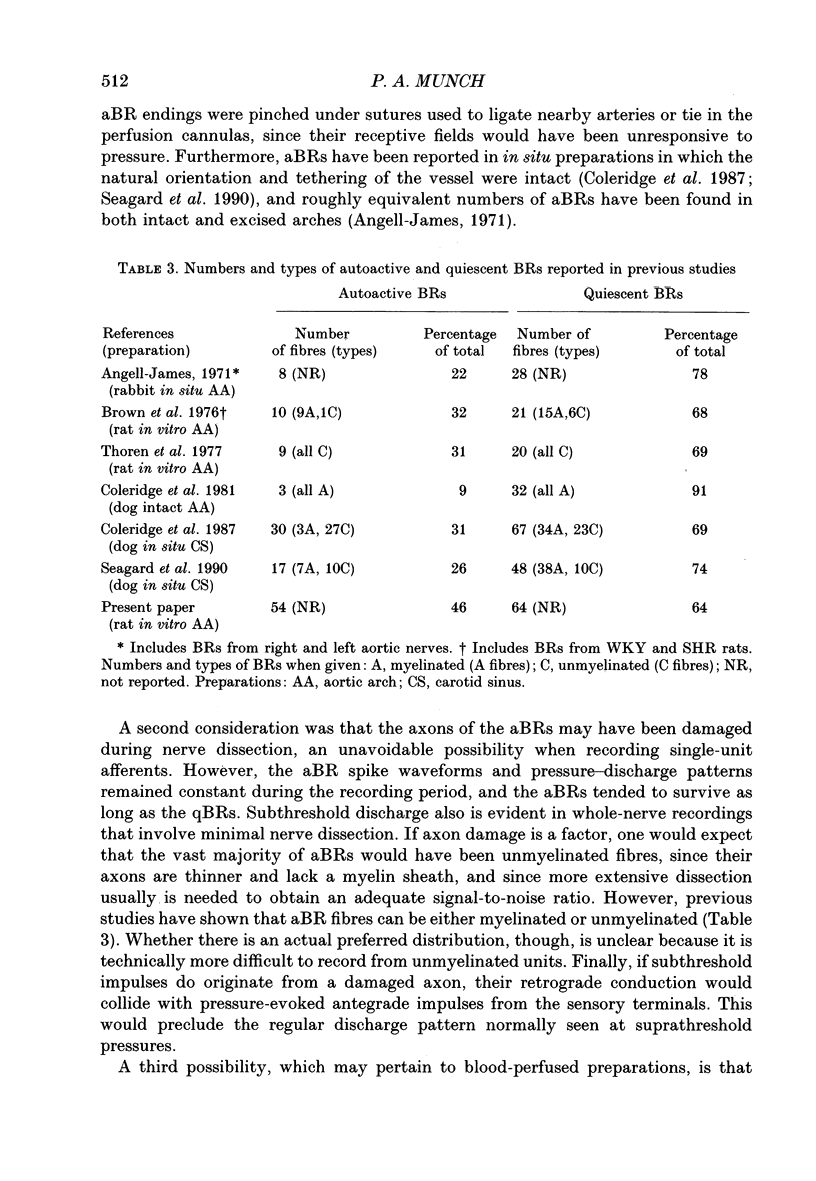
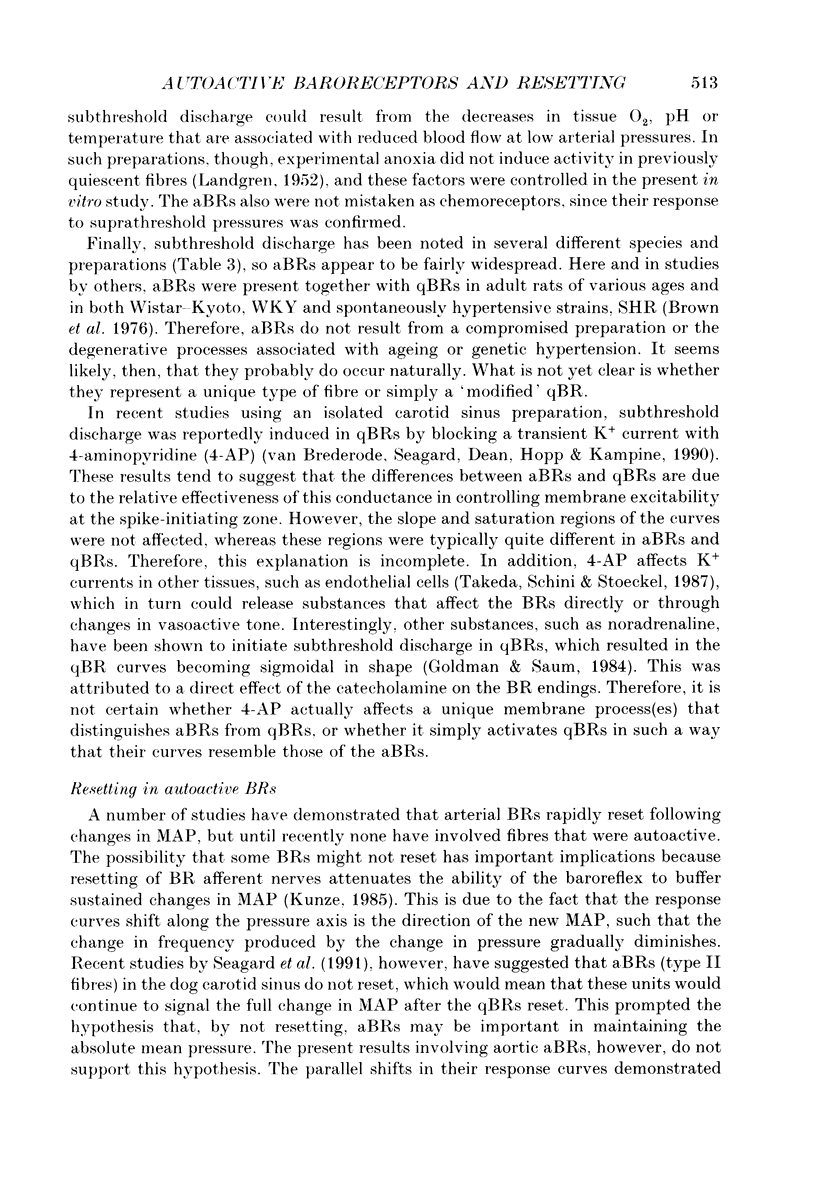
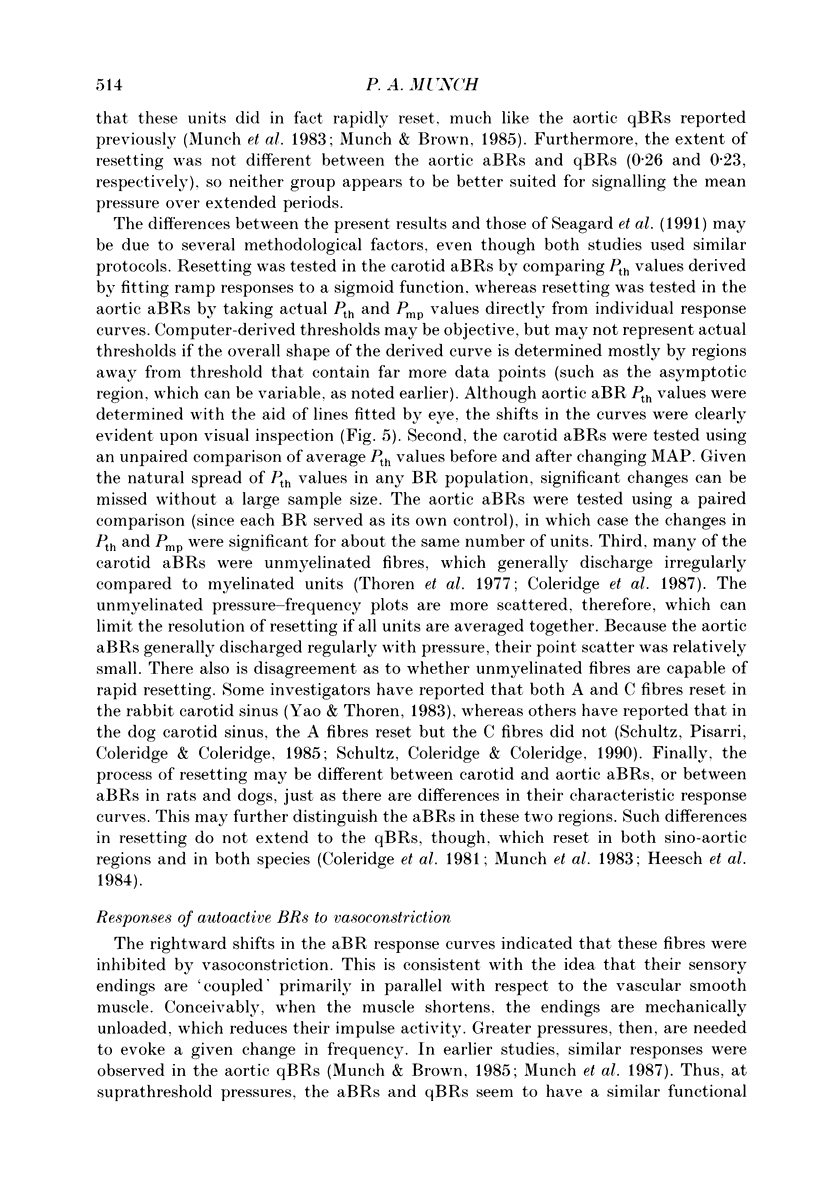
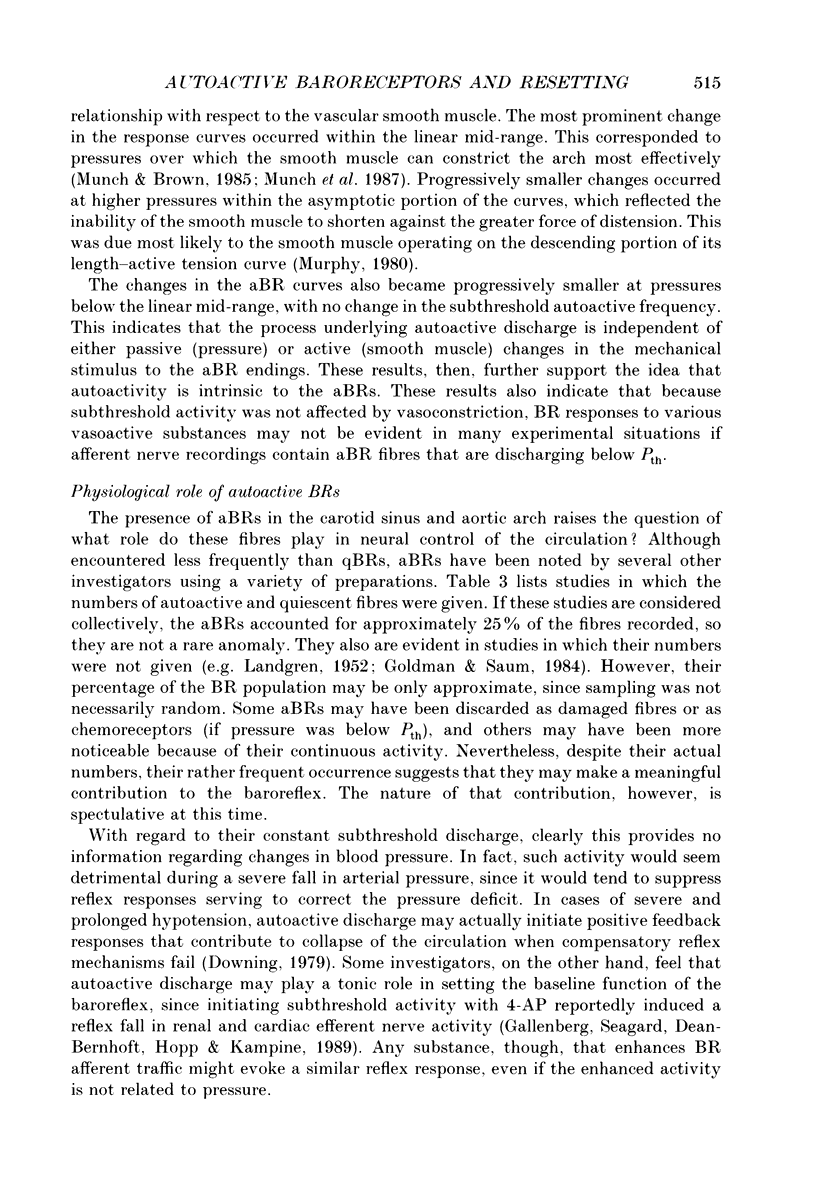
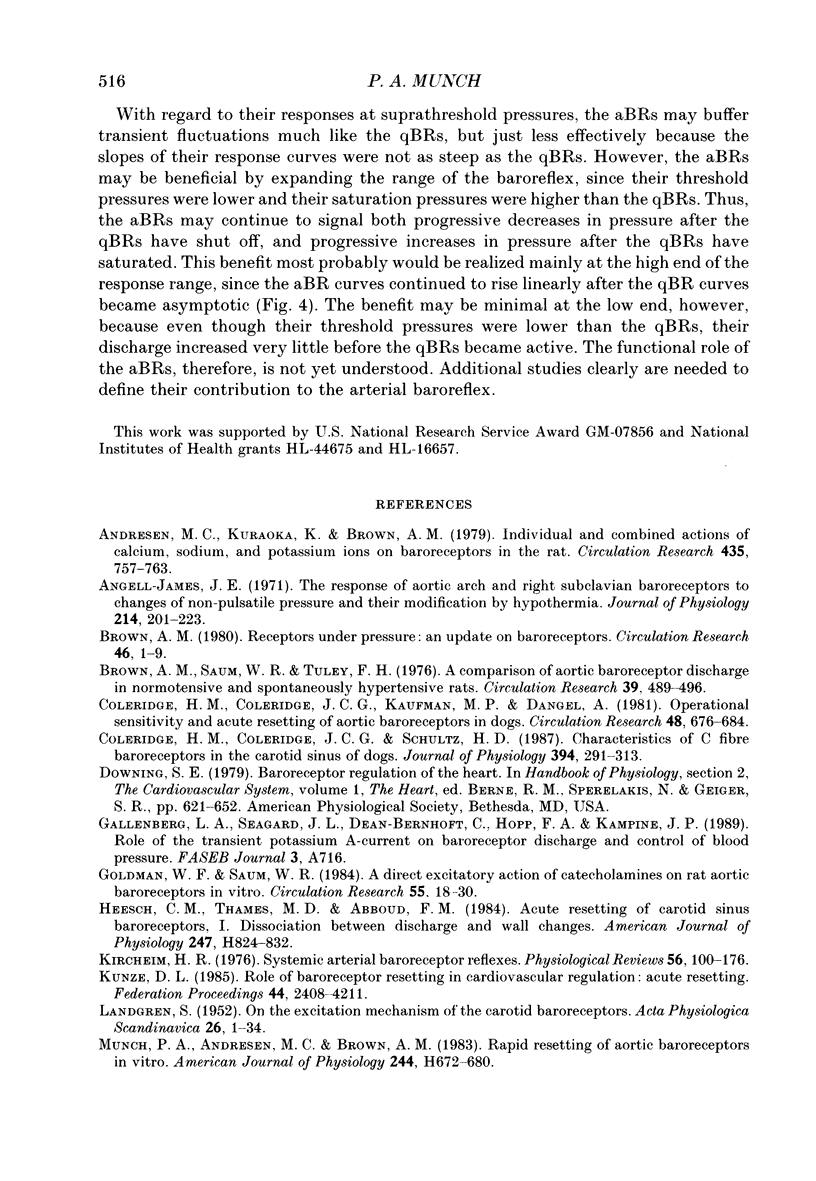
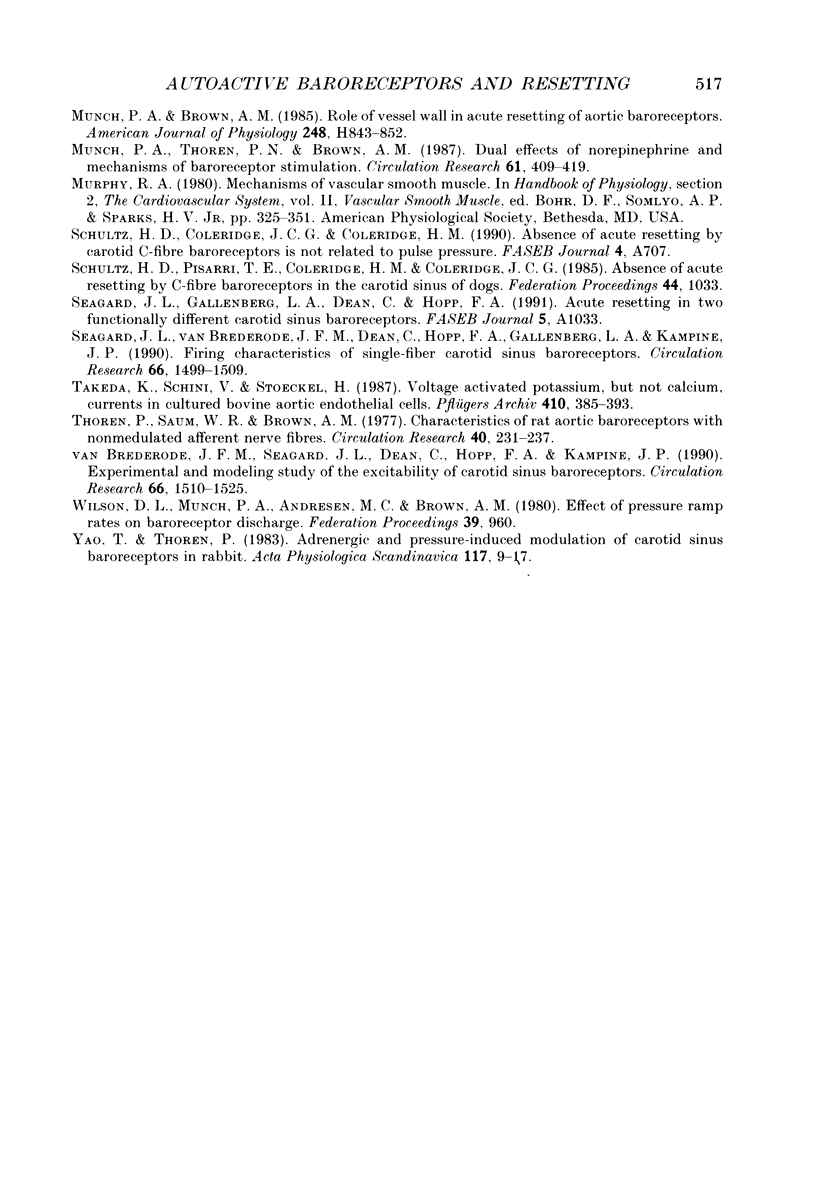
Selected References
These references are in PubMed. This may not be the complete list of references from this article.
- Andresen M. C., Kuraoka S., Brown A. M. Individual and combined actions of calcium, sodium, and potassium ions on baroreceptors in the rat. Circ Res. 1979 Dec;45(6):757–763. doi: 10.1161/01.res.45.6.757. [DOI] [PubMed] [Google Scholar]
- Brown A. M. Receptors under pressure. An update on baroreceptors. Circ Res. 1980 Jan;46(1):1–10. doi: 10.1161/01.res.46.1.1. [DOI] [PubMed] [Google Scholar]
- Brown A. M., Saum W. R., Tuley F. H. A comparison of aortic baroreceptor discharge in normotensive and spontaneously hypertensive rats. Circ Res. 1976 Oct;39(4):488–496. doi: 10.1161/01.res.39.4.488. [DOI] [PubMed] [Google Scholar]
- Coleridge H. M., Coleridge J. C., Kaufman M. P., Dangel A. Operational sensitivity and acute resetting of aortic baroreceptors in dogs. Circ Res. 1981 May;48(5):676–684. doi: 10.1161/01.res.48.5.676. [DOI] [PubMed] [Google Scholar]
- Coleridge H. M., Coleridge J. C., Schultz H. D. Characteristics of C fibre baroreceptors in the carotid sinus of dogs. J Physiol. 1987 Dec;394:291–313. doi: 10.1113/jphysiol.1987.sp016871. [DOI] [PMC free article] [PubMed] [Google Scholar]
- Goldman W. F., Saum W. R. A direct excitatory action of catecholamines on rat aortic baroreceptors in vitro. Circ Res. 1984 Jul;55(1):18–30. doi: 10.1161/01.res.55.1.18. [DOI] [PubMed] [Google Scholar]
- Heesch C. M., Thames M. D., Abboud F. M. Acute resetting of carotid sinus baroreceptors. I. Dissociation between discharge and wall changes. Am J Physiol. 1984 Nov;247(5 Pt 2):H824–H832. doi: 10.1152/ajpheart.1984.247.5.H824. [DOI] [PubMed] [Google Scholar]
- James J. E. The responses of aortic arch and right subclavian baroreceptors to changes of non-pulsatile pressure and their modification by hypothermia. J Physiol. 1971 Apr;214(2):201–223. doi: 10.1113/jphysiol.1971.sp009428. [DOI] [PMC free article] [PubMed] [Google Scholar]
- Kirchheim H. R. Systemic arterial baroreceptor reflexes. Physiol Rev. 1976 Jan;56(1):100–177. doi: 10.1152/physrev.1976.56.1.100. [DOI] [PubMed] [Google Scholar]
- Kunze D. L. Role of baroreceptor resetting in cardiovascular regulation: acute resetting. Fed Proc. 1985 May;44(8):2408–2411. [PubMed] [Google Scholar]
- LANDGREN S. On the excitation mechanism of the carotid baroceptors. Acta Physiol Scand. 1952 Jul 17;26(1):1–34. doi: 10.1111/j.1748-1716.1952.tb00889.x. [DOI] [PubMed] [Google Scholar]
- Munch P. A., Andresen M. C., Brown A. M. Rapid resetting of aortic baroreceptors in vitro. Am J Physiol. 1983 May;244(5):H672–H680. doi: 10.1152/ajpheart.1983.244.5.H672. [DOI] [PubMed] [Google Scholar]
- Munch P. A., Brown A. M. Role of vessel wall in acute resetting of aortic baroreceptors. Am J Physiol. 1985 Jun;248(6 Pt 2):H843–H852. doi: 10.1152/ajpheart.1985.248.6.H843. [DOI] [PubMed] [Google Scholar]
- Munch P. A., Thoren P. N., Brown A. M. Dual effects of norepinephrine and mechanisms of baroreceptor stimulation. Circ Res. 1987 Sep;61(3):409–419. doi: 10.1161/01.res.61.3.409. [DOI] [PubMed] [Google Scholar]
- Seagard J. L., van Brederode J. F., Dean C., Hopp F. A., Gallenberg L. A., Kampine J. P. Firing characteristics of single-fiber carotid sinus baroreceptors. Circ Res. 1990 Jun;66(6):1499–1509. doi: 10.1161/01.res.66.6.1499. [DOI] [PubMed] [Google Scholar]
- Takeda K., Schini V., Stoeckel H. Voltage-activated potassium, but not calcium currents in cultured bovine aortic endothelial cells. Pflugers Arch. 1987 Nov;410(4-5):385–393. doi: 10.1007/BF00586515. [DOI] [PubMed] [Google Scholar]
- Thorén P., Saum W. R., Brown A. M. Characteristics of rat aortic baroreceptors with nonmedullated afferent nerve fibers. Circ Res. 1977 Mar;40(3):231–237. doi: 10.1161/01.res.40.3.231. [DOI] [PubMed] [Google Scholar]
- Yao T., Thoren P. Adrenergic and pressure-induced modulation of carotid sinus baroreceptors in rabbit. Acta Physiol Scand. 1983 Jan;117(1):9–17. doi: 10.1111/j.1748-1716.1983.tb07173.x. [DOI] [PubMed] [Google Scholar]
- van Brederode J. F., Seagard J. L., Dean C., Hopp F. A., Kampine J. P. Experimental and modeling study of the excitability of carotid sinus baroreceptors. Circ Res. 1990 Jun;66(6):1510–1525. doi: 10.1161/01.res.66.6.1510. [DOI] [PubMed] [Google Scholar]


